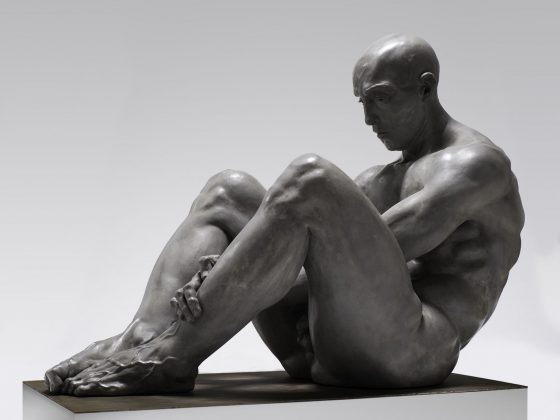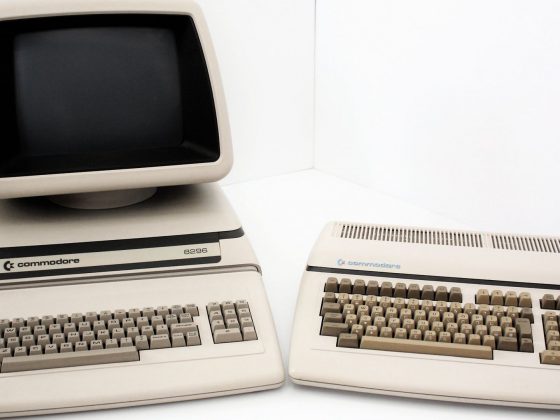“Painting is the most significant medium in which I work. But if I were to answer the question whether painting could give me everything I need, I have to say that it couldn’t”.
An interview with Bartek Jarmoliński, whose works are available on Ownetic, by Ewa Pasternak-Kapera.
Ewa: You devote much attention to the condition of the contemporary human being. You look for new definitions, question cultural models, identify problems and ask about values. What is the message flowing from the works that you are most strongly concerned about?
Bartek: I think that none of the works that I’ve made over the last few years are aimed at giving clear answers. Their aim is rather to ask questions and show that unequivocal definitions do not exist and should not exist. There are people who devote their time to development and thoughts: Who are we? What do we want from the world? What can we give others? What are our relations with others? And so on. There are people who do not have such reflections, for whom cultural references are so precise and obvious that they hold on to it as if they didn’t need anything else. I’ve certainly devoted the most space to an analysis of my sex/gender. The main message opposes the unequivocal, stereotypical definition of manhood in reference to cultural frameworks that have prevailed for years. Is manhood actually a permanent psychophysical factor that should repeat itself in all male individuals? This is mainly asking questions. Such is my role.

Is the category of manhood the main topic of your considerations?
Yes, and it’s a very difficult topic. I think that categories for defining manhood in our culture are relatively precise and quite rigorous. The same goes for defining womanhood – the things that a woman should do. This can be transposed onto the male world. There is a conviction about the “genuineness” of a man, about what this “real” man should do. This topic affects me very strongly and every time I hear the term “real man”, it makes my blood boil and I’m willing to ask: what does it mean at all? What affects me most strongly in this context is obviously the issue of women’s freedom of choice. Here we’re talking not only about women but about the violation of fundamental human rights. I participated in the black marches in Łódź, because I find such things unacceptable. In my opinion, this refers to a majority of women, their carnality and freedom of choice, but also male awareness to a large extent. It’s difficult for me to understand men’s indifference and the lack of their own opinion. During discussions, I often actually came across considerable detachment and indifference towards this issue and statements that this is not important. I do not understand such reasoning. So I constantly show, in a manner that I regard as grotesque and tinted with humor, the nature of maleness in which there is room for the need to dominate, for games with a sexual background, for the need to play this so-called more important role in the social context and out of cowardice…
And you often make use of self-portrait. What function does it fulfill in your works? Do you build in this way an expression that is very personal or that deals with the universal man?
In the case of many works in which I’ve used my own body and face, the main aspect is not my personal issues, but a sort of universalism. Of course, everything results from my observations and experiences, but in my view, what I want to convey with the use of my face is quite universal, particularly when I talk about men and about male nature. I do not talk mainly about myself – certainly also about myself to some extent, but then I am generally guided by the idea of showing men within a certain scope of what exists only between men. The secrets of my sex, the things that are typical of us. Generally, when I use my face, I do so usually for two reasons: Firstly, I have the right to use and dispose of my face in a way that I consider to be right and relevant without interfering in someone else’s life. I assume full responsibility for this. Secondly, as long as I do not treat myself too seriously and have a certain need for exhibitionism, I will continue to use my body and face to perform many works in my area of expression. Does that happen frequently? Maybe I am associated more often with works like that.
Your works deal with topics that may arouse controversy – should they?
An important aspect is the layer of content which is definitely critical. Sometimes I ask quite uncomfortable or provocative questions, but indifference would be the worst thing. I think that Natalia LL, who showed her photo from the cult cycle Consumer Art with a woman licking a banana almost 50 years ago, did it at a very good moment and in a great context. That was a time of international discourse, whereas in our Polish situation these waves arrived very late. It is good that they did at all.

You often use social media profiles. What role do they play in building your image?
You think so? Maybe. Of course, publishing my own works or photos is conscious. I am obviously aware of how broadly this is disseminated… Well, I can actually say that all of my photos, more or less spicy ones, that I’ve uploaded onto Instagram recently, are published there because they will form a whole project.
I thought that it looks like some kind of plan…
(Laughs) It’s true. Now I can’t deny it.
I am very curious about your plans. Can you reveal anything?
Another plan concerns the image of manhood with a much more erotic meaning. The photos that I have posted on Instagram will help me carry out one small project which is significant to me. And I need this whole set to make up a summary that’ll be one painting & graphic work and will show another stereotype that really functions with regard to men.
You are active across various media: painting, photograph, video, performance. You’re perceived mainly as a painter, but is that “label” the closest to you?
I guess I don’t have a major influence on that, but indeed, painting is the most significant medium in which I work. But if I were to answer the question whether painting could give me everything I need, I have to say that it couldn’t. The most important thing is to speak up in a given discourse. The medium is only another conscious choice.

And how about your process of building meaning in a painting? You create collages, but are you guided by intuition or simply by accident in your work?
There is no recipe for this. There are various ways of reaching the final outcome. I think that the final outcome of what we do and how we call it – because we must be able to call it somehow – must be satisfied before it’s made public. It is actually a very personal matter. A very precise plan and the use of intuition are not completely inconsistent. In artistic work, there is much room for intuition, which is inseparably connected with any thought process. I think that collages are largely a matter of coincidence. Only later, in the final outcome, this coincidence is strictly controlled. But, obviously, there is a lot of room for coincidence.
Do you invent the titles of your works at the stage of conceptualization of the series or during work on individual paintings?
I work in series; these series usually comprise a few or several works. In the case of collages, these series have a definitely larger number of works. As a rule, the title is inseparably connected with the conception and appears somewhere at the beginning, and then there is only a selection of resources. In this regard, it’s rather impossible for me to conclude that I will give another title to my work in the final outcome upon completion. After all, in the case of my works, titles play a really important role. They are a sort of guideline to me, and to anyone wants to establish any kind of discourse with my works and my intentions.
Do you promote and sell your works on your own? Or do you think that these matters should be handled by a selected gallery or institution on behalf of the artist?
This is a very difficult topic. In the situation of the Polish market, we can talk about trading rather than sales. These are two different issues. I admit that I find it hard to fit into this. I am represented by a gallery, and there are only a few galleries that really sell works. There is very little room for artists who can make it onto the international forum. The number of people who want to achieve something in today’s art world is enormous. I have the impression that today many people call themselves artists; consequently, there are more artists than recipients. You need to have a really strong power of expression and quite a strong personality to succeed.
Your artistic utterances are very ironic. Your works are dominated by references to pop culture, and you interpret it with such irony…
I don’t have to watch TV; unfortunately, whether I like it or not, I hit upon very many topics and faces. While the gossip press and websites like Pudelek exist, the human figure is a product. I react really badly to the word “celebrity”. I wouldn’t like to be fed with this pulp. I am not interested in such scandals. I think it’s no use paying attention to such related news when more important matters have been happening in Poland. When I draw upon topics concerning pop culture and consumption, I focus on figures from around the world rather than the Polish environment. Like in the case of my cycle of “saints”, which shows that everyone is a product and money-making pseudo-value. This made me think of A Portrait of Money – an old cycle by Pola Dwurnik. Quite well-rendered banknotes presented in an oversized scale. I think that A Portrait of Money is a work in which a large part of our society could see themselves.

BARTEK JARMOLIŃSKI (born 1975, Łódź) – a graduate of the Strzemiński Academy of Art Łódź. Recognized as one of the most intensively evolving contemporary artists of Łódź. He works with painting, photography, drawing, video, and performance. He draws from pop art and hyperrealism. He is the author of several dozen individual exhibitions, including in Warsaw, Łódź and Berlin. Took part in over 100 collective exhibitions in Poland and abroad.










